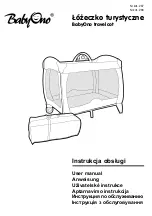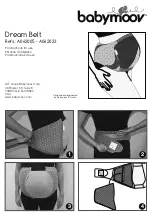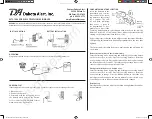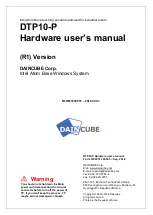
7
now have to find out on which position on this circle the star is located at
this very moment. For this, let us refer to figure 5.
Figure 5 shows the engraving on the recticle of the polar finderscope. You
may notice three figures with little circles that are connected with lines.
These symbols represent constellations.. To align the mount onto the north
celestial pole we need the constellation in the upper left and the constella-
tion below the middle at the right. You may have recognized the left constel
-
lation already – it ist he Big Dipper, that we already located successfully. The
other constellation is Cassiopeia which we have to locate now. To do this, let
us have a look onto figure 6, which is simply showing a bigger part of the sky
then figure 4 above:
We recognize the Big Dipper at the lower part in the middle of the field of
view, the North Star almost in the middle oft he picture and a constellation at
the upper end of the picture just slightly to the right of the middle. This con-
stellation looks like a W turned upside down - Cassiopeia. We have marked
stars in each of the constellations for you: the first star in the Big Dippers
handle (Alkaid), Polaris and the star at the lower right in the constellation
Cassiopeia (Epsilon Cassiopeia). These three stars are forming a line.
Now we are moving the polar finderscope in it´s bracket until the line in the
recticle aligns with the orientation of the corresponding line at the sky (Fig. 7).
Please notice the difference tot he image oft he recticle in the beginning of
this manual (figure 5): the position oft he constellation symbols in the recticle
now aligns with the orientation oft he real constellations at the sky. Now you
move the mount only with the fine adjustment knobs for azimut and altitude
until Polaris is positioned at the right place in the line in the recticle – we
have marked this position already for you with a white dot star. Your mount
is now aligned to the North Celestial Pole.
Aligning the mount to the Southern Celestial Pole is analogous to the align-
ment described above. The constellations that help us orient the recticle
are the Southern Cross (or, more precisely its brightest star, Acrux) and the
brightest star in the constellation Eridanus (Achenar). The star that has to
be positioned into the right place in the recticle is Polaris Australis (Sigma
Octans).
Summary of Contents for 4964131
Page 2: ...2 Instruction Manual 5 GB Bedienungsanleitung 9 DE ...
Page 3: ...3 Fig 2 Fig 3 Fig 4 Fig 1 ...
Page 4: ...4 Fig 6 Fig 7 Fig 5 ...
Page 15: ...15 Notes Notizen ...


































